

Postclassic Mayan Art
Photos taken in 1962
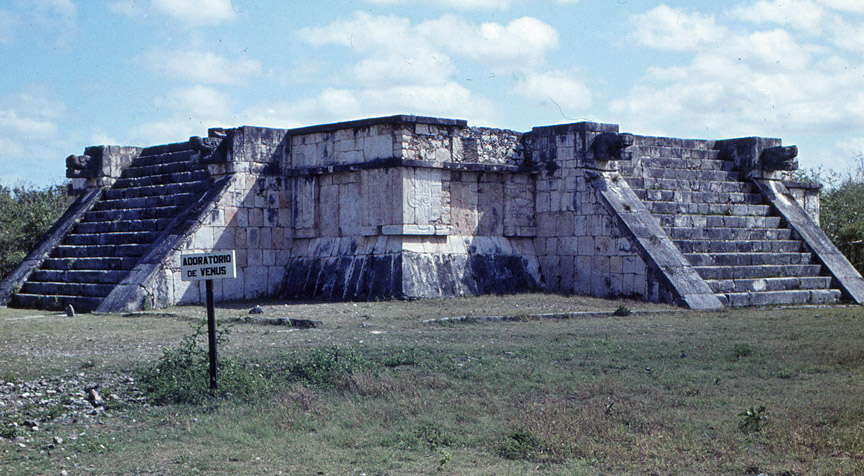
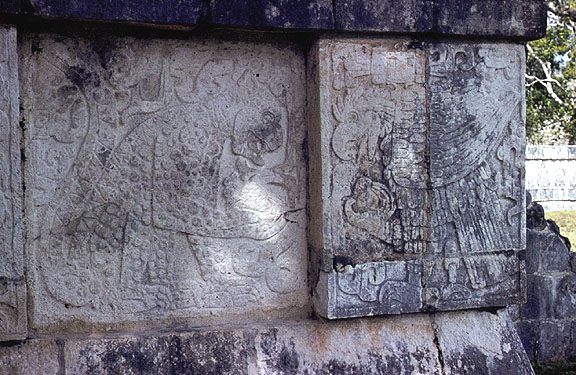
post classic art at Chichén Itzá
The Itzá brought their Mexicanized Maya culture to Chichén Itzá in the northern part of the Yucatán Peninsula. During their rule, Mexican-influenced cultures produced certain changes in the traditional Maya way of life. In the social structure military lords rose in power, and the institution of a formalized priesthood separated from political rulers. This change was echoed in religion, in which the feathered serpent-god Kukulcan dominated all others.
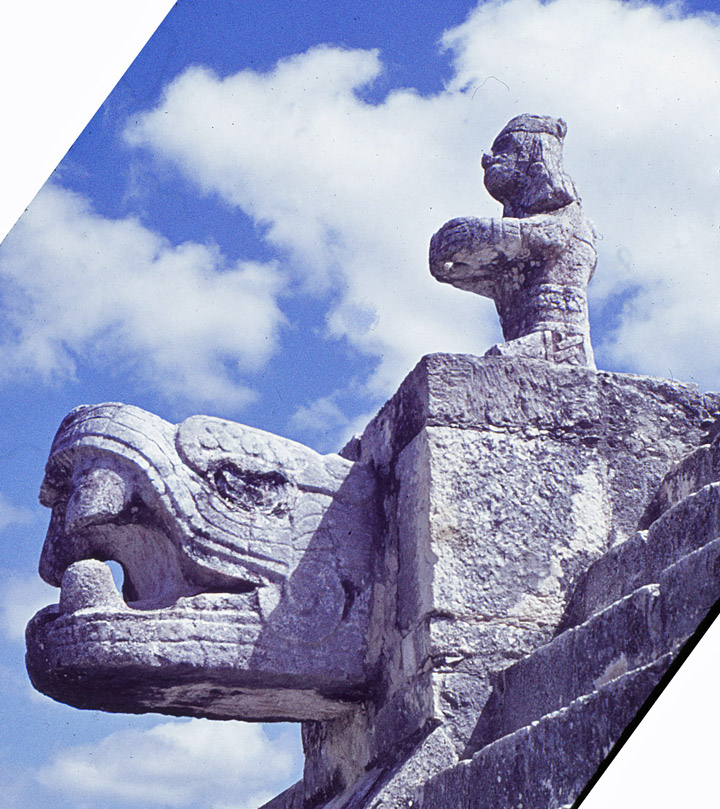
Kukulcan
The use of human sacrifice in worship became increasingly important. There were also new forms of sacrifice; the Itzá threw victims into a sacred cenote, or natural well, along with offerings of pottery, gold, jade, and other valuables. This cenote, in fact, determined the location of Chichén Itzá and was responsible for the city’s importance as a pilgrimage center.
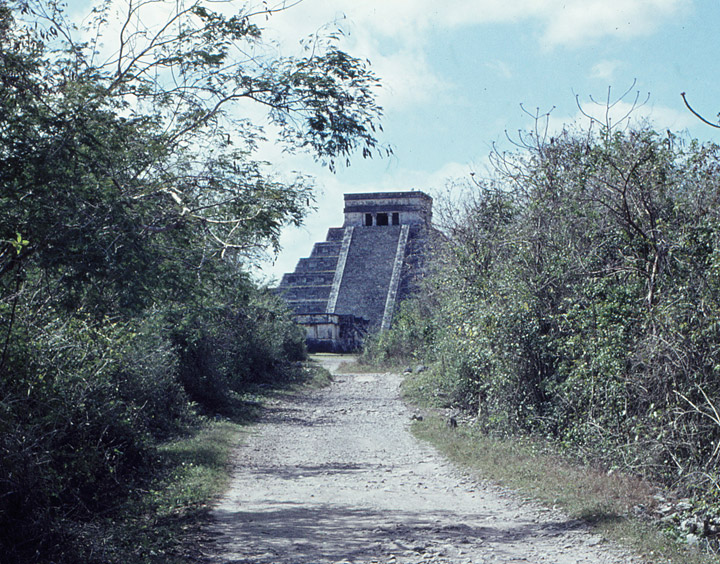
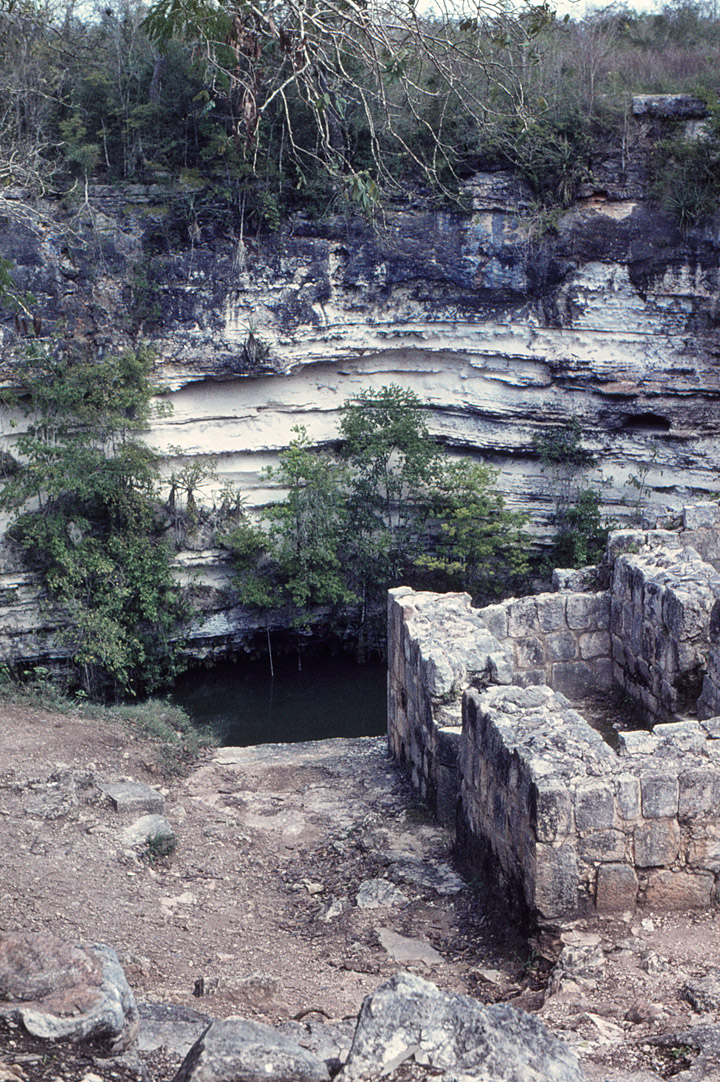
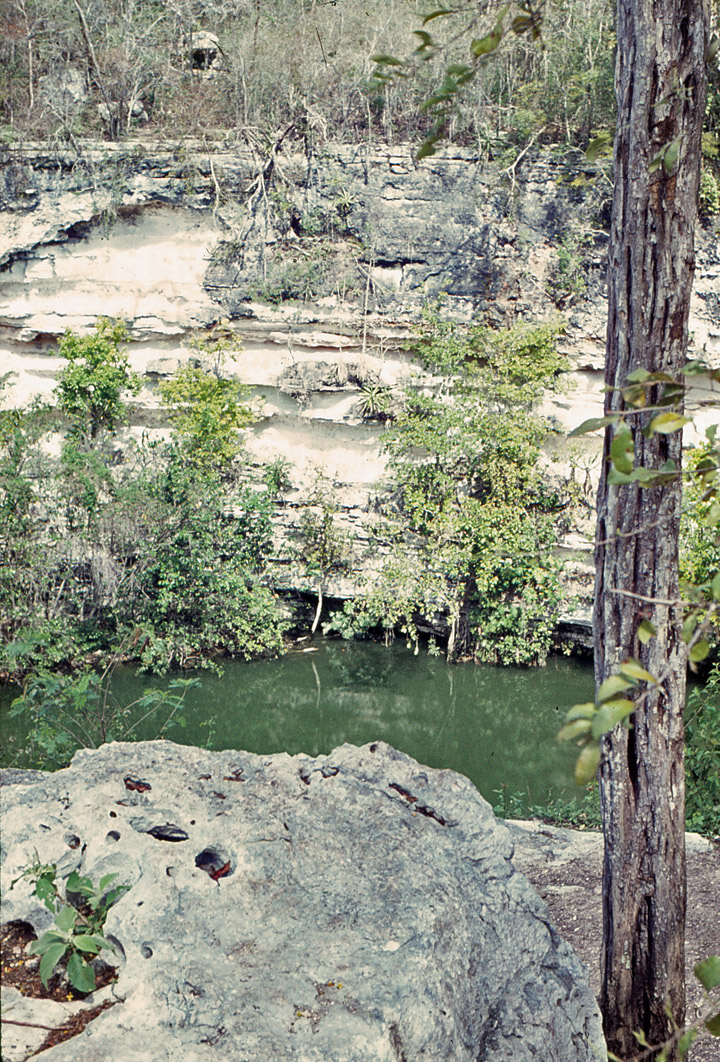
cenote
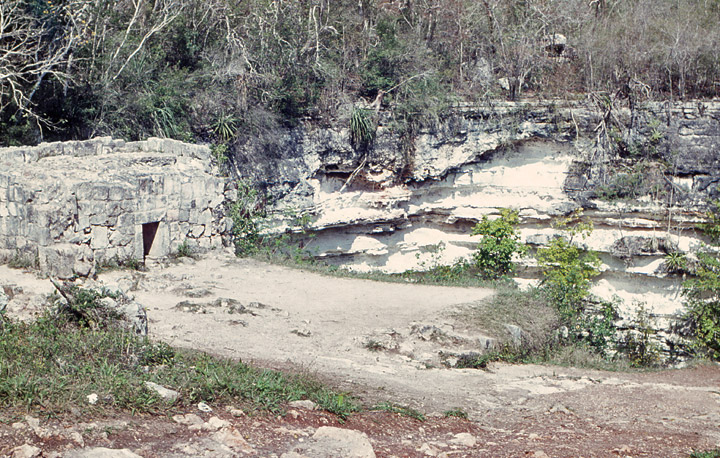
Chichén Itzá was a very large city with a central area covering about 5 sq km (2 sq mi). Its architecture shows the introduction of columns, wider rooms and doorways, and sloping zones around the base of the buildings.
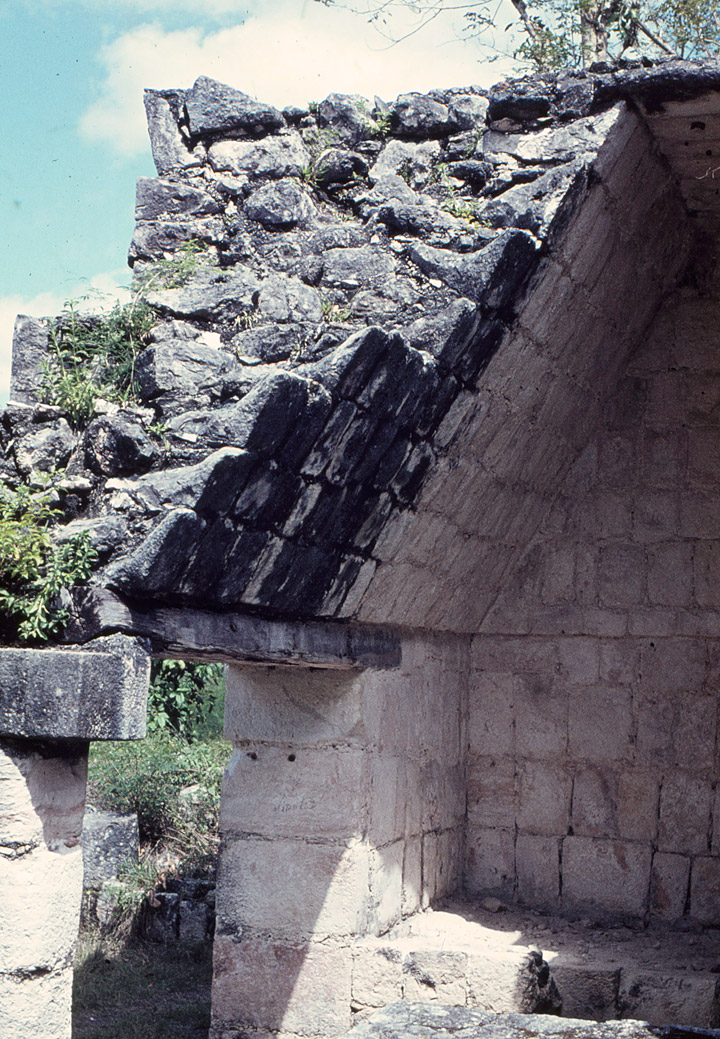
Mayan Arch
(note fill behind face stones)
The core area includes numerous temples and ball courts, one of which is the largest known in Mesoamerica. One distinctive structure of the city is a round temple that functioned as an observatory.
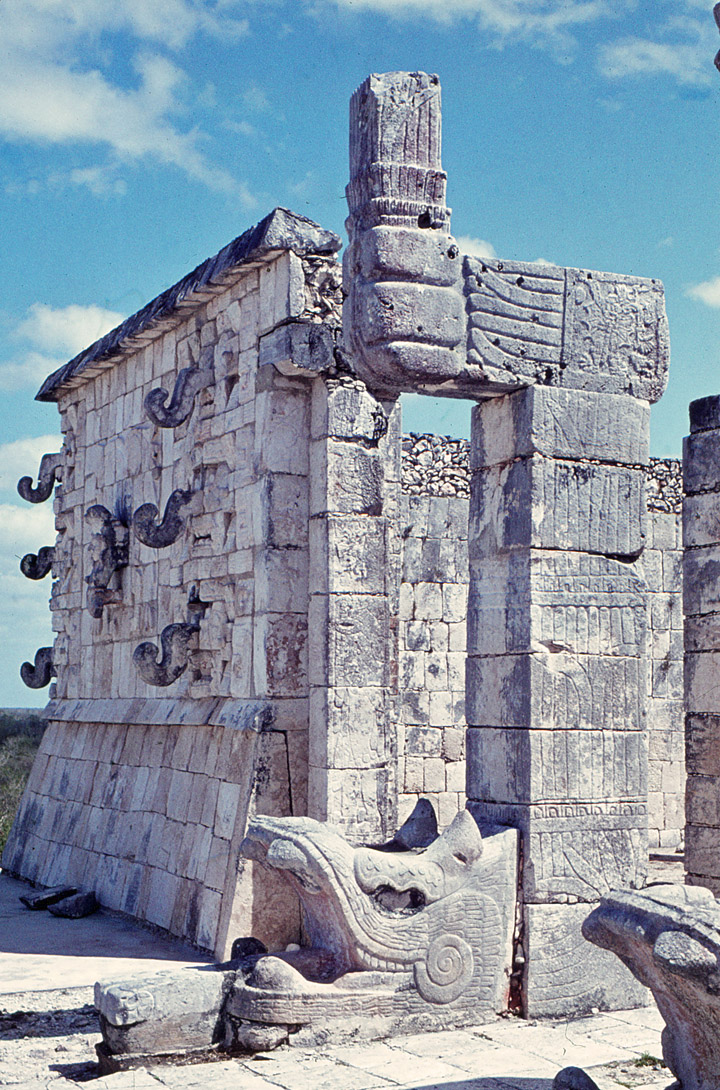
long-nosed CHAC figures
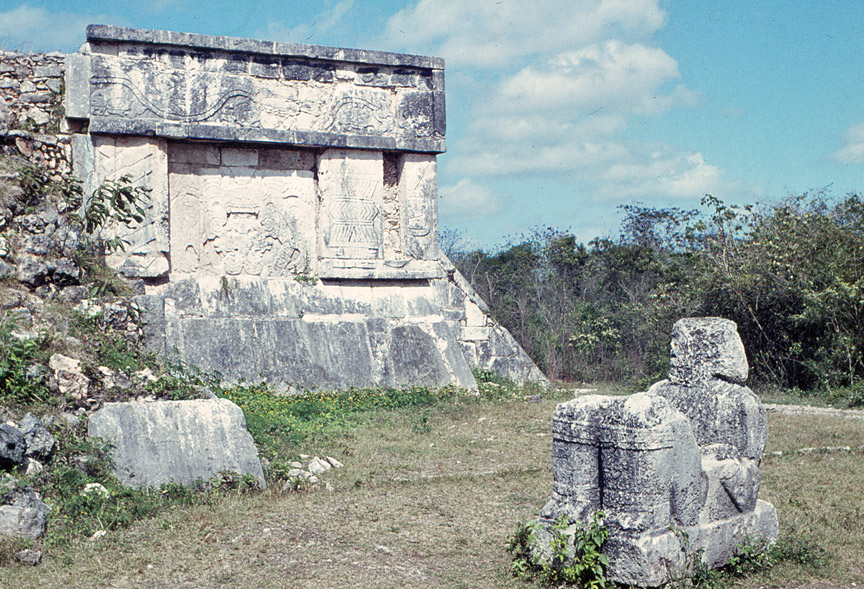
Chac-Mool
Statues and motifs of Kukulcan appeared on buildings, staircases, roofs, columns, and doorway lintels. Life-size stone figures supported the altars, and great reclining stone figures, called Chacmools, were sculpted.
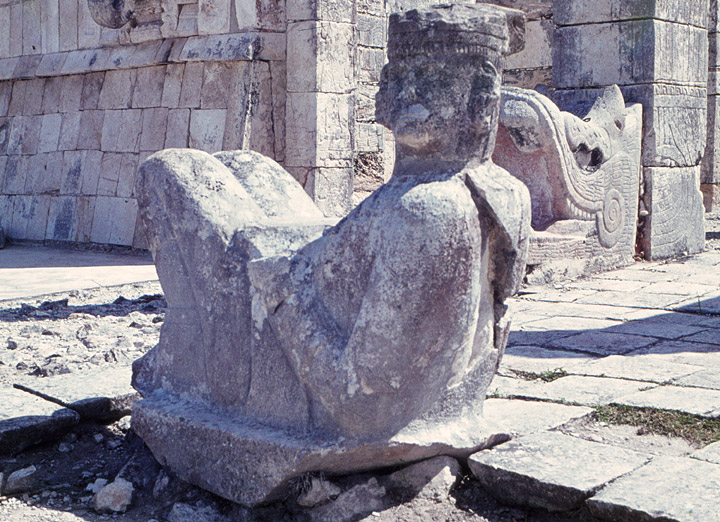
Chac-Mool
Warriors depicted in bas-relief columns lack the Classic Maya distortion of head and eyes. Pottery became monochrome, or single-colored, instead of multicolored, as it had been in the Classic era, but it was often carved or incised with intricate designs. Gold, copper, turquoise, and onyx were used in jewelry. Painted books, called codices, were made of bark fiber or deerskin. Trade and commerce, especially maritime exchange, increased.

warrior
Text from Microsoft Encarta
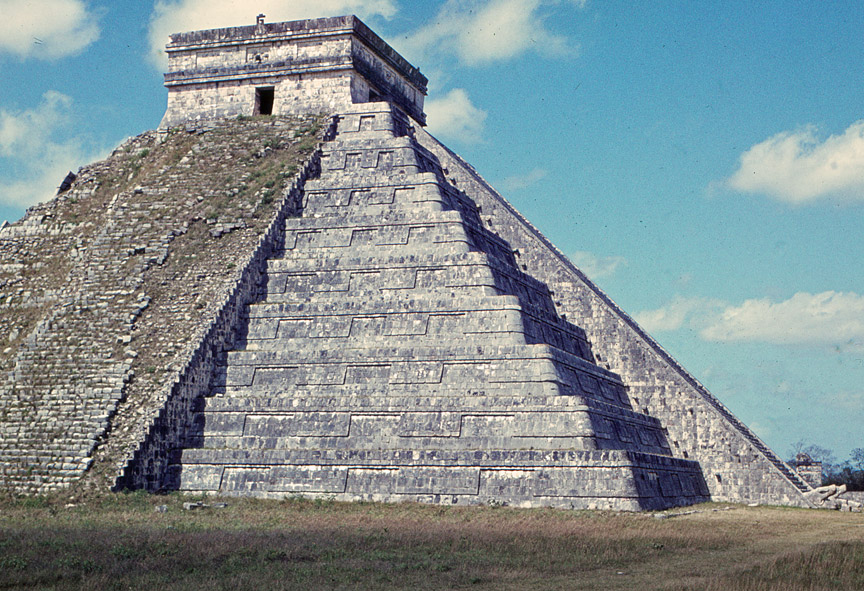
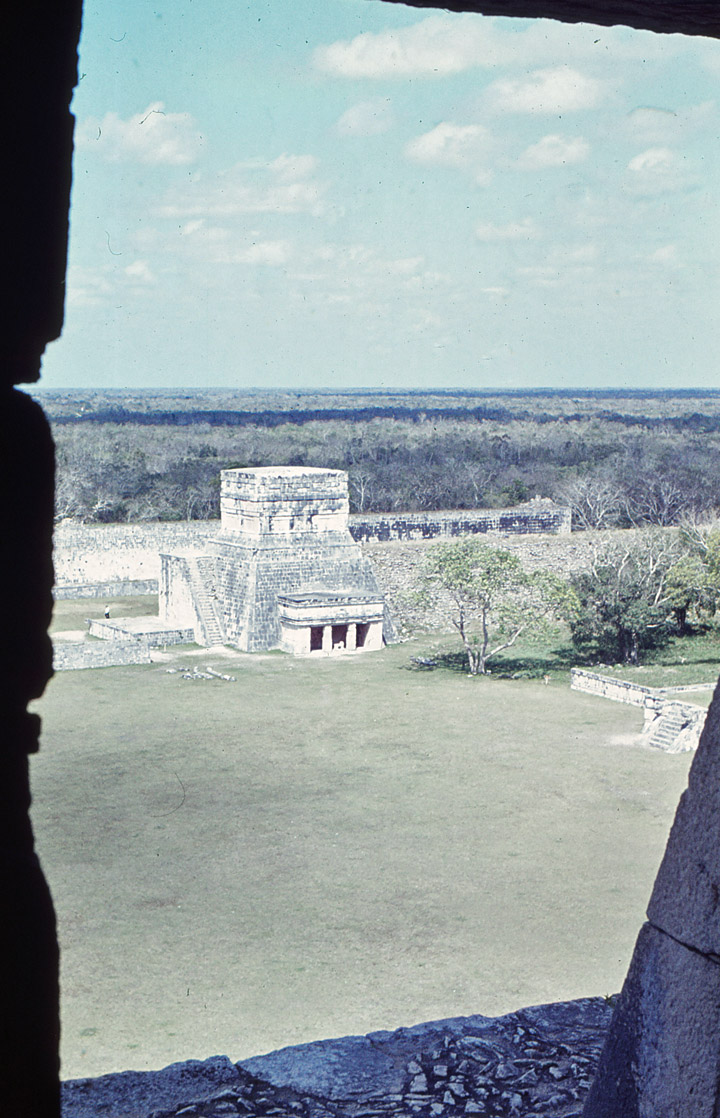
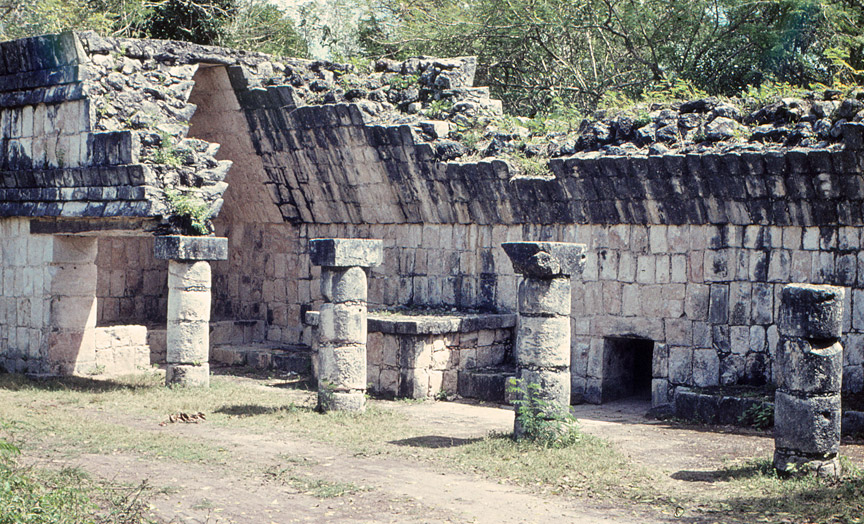
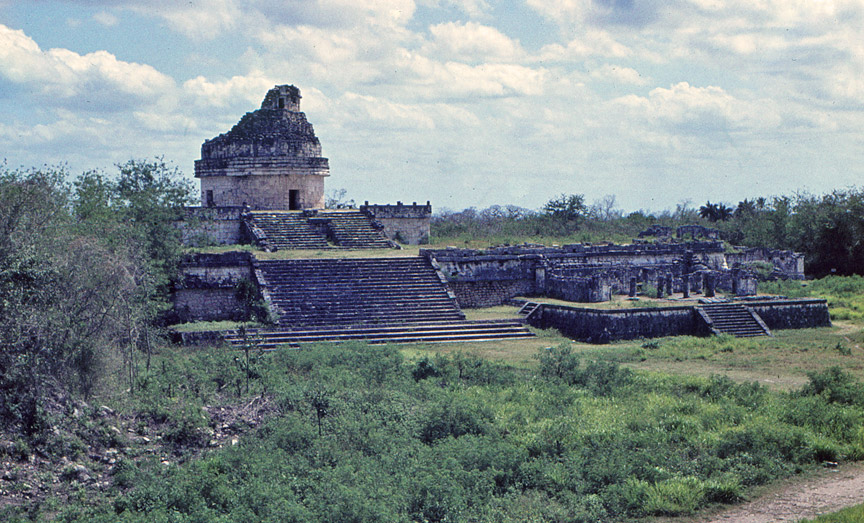
![]()
Mayaland Hotel
on the grounds of
Chichén Itzá
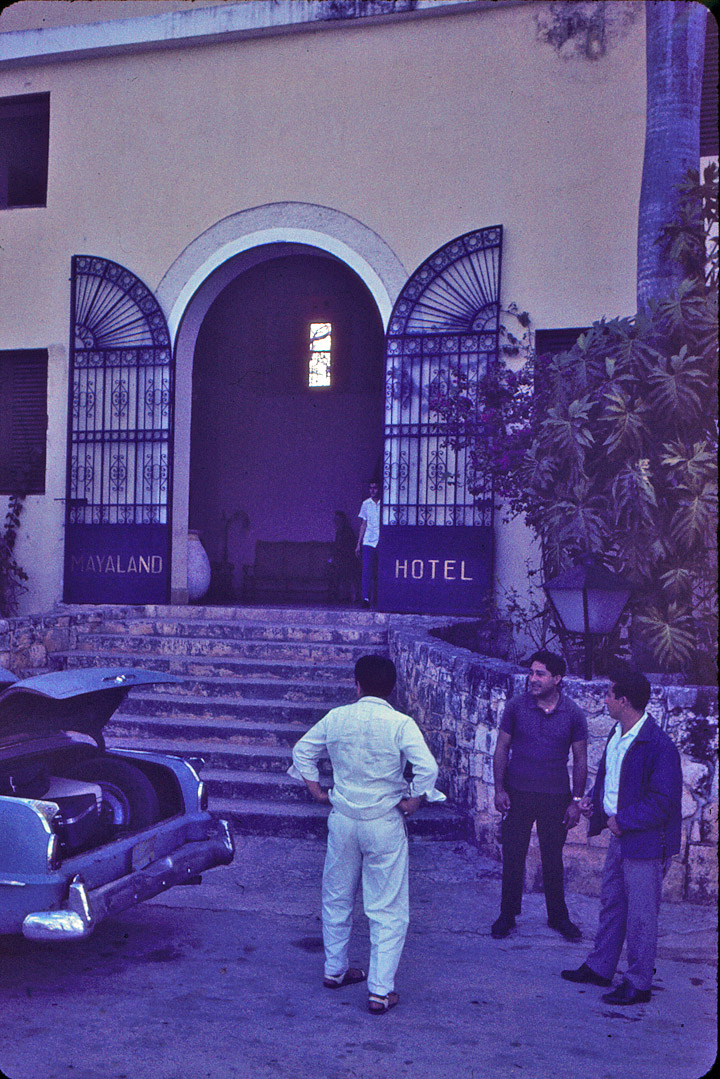
entrance
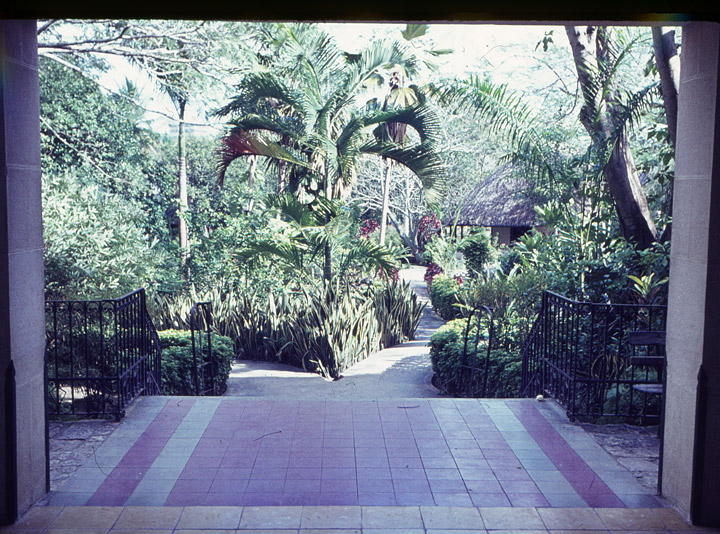
the garden
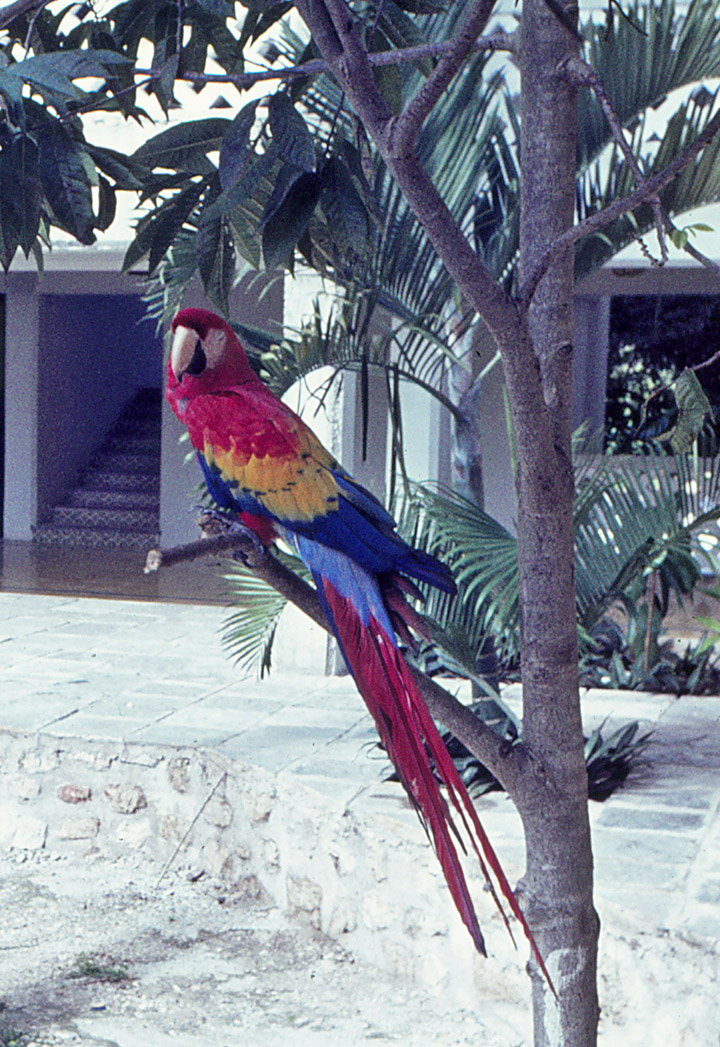
resident grand bird
![]()
![]()